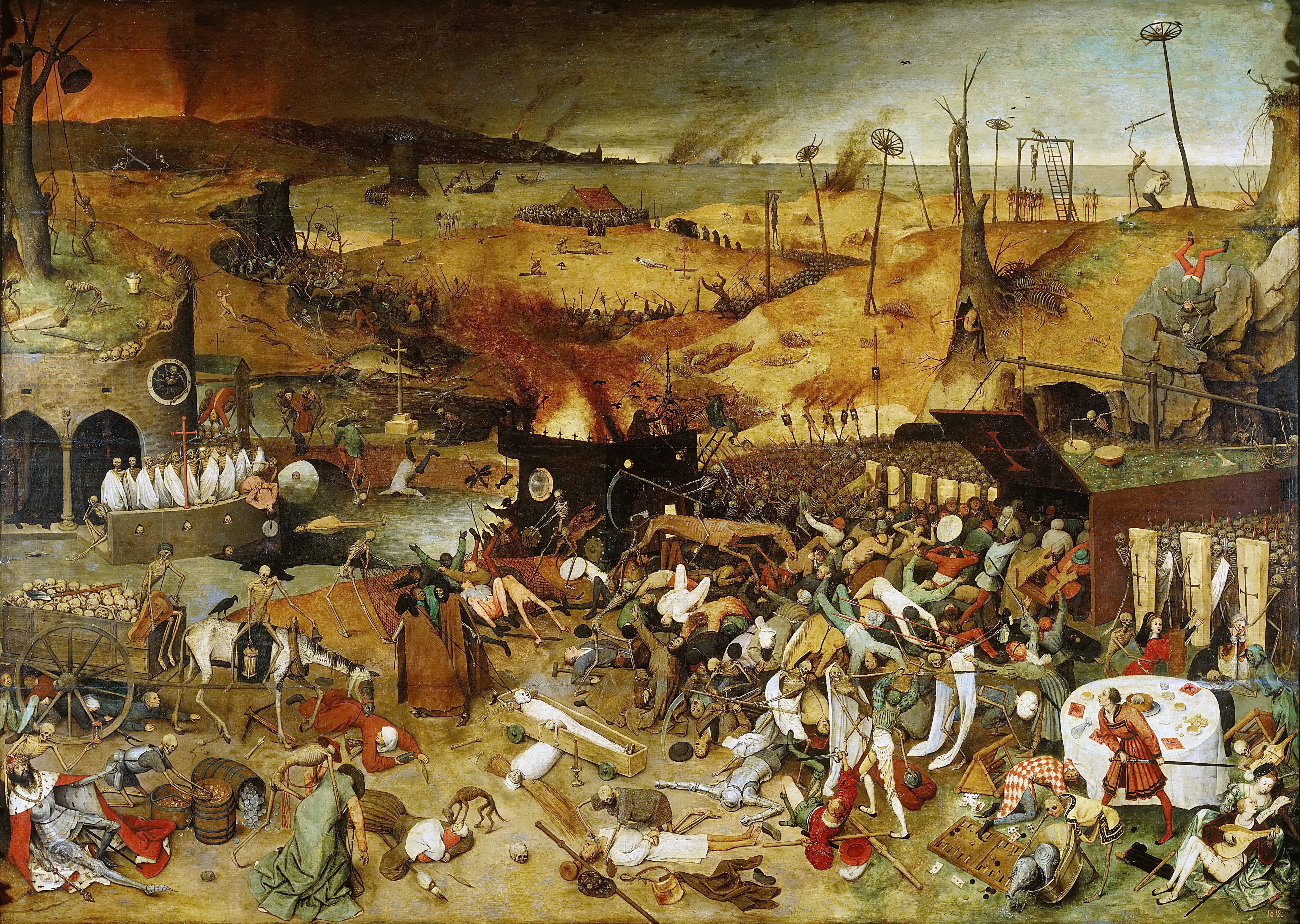by Josh Fox
Skeletons—we all have them. We all know about them. Starting off with 270 bones when we’re born and finishing with 206 when we die, the skeleton is a rather simple part of the human body to wrap your head around (unless, of course, you’re a medical professional). In spite of this, a lot of people all throughout history, and all around the world, have managed to do a great deal with them in regard to various myths and stories, all capable of invoking varying degrees of intrigue.
In Japan, there exists a mythical, giant skeleton creature called the Gashadokuro, or “Starving Skeleton.” The Gashadokuro is born from the bones of people who died from starvation, and in its new unlife, it seeks to quench its hunger pains by biting the heads off of people and drinking the blood that sprays out of their decapitated bodies—sort of like a larger, more violent vampire. Very pleasant to be around, from the sound of it.
Skeletons are also featured prominently in Pieter Bruegel the Elder’s oil painting The Triumph of Death. The painting depicts an army of skeletons wreaking havoc across a devastated landscape. Most of them are simply killing the people in the area, who are offering very futile resistance, while some skeletons are shown acting like normal people in some sort of macabre parody of daily life. The imagery appears to be making two simultaneous statements: Even if we act like it isn’t the case, death exists in unison with life, and: No matter how much we try to avoid it, death is an inevitability that will take us all. Very pleasant.
The culture that most famously involves skeletons would most likely be Mexican culture, specifically with their holiday of the Day of the Dead (El Dia de los Muertos). From October 31 to November 2, Mexicans honor the memories of their ancestors by placing offerings at their graves, and the imagery of skeletons is very commonplace. Candy ones are used to decorate ofrendas, and masks or figurines called “calacas” are also integrated into the festivities. Pixar’s “Coco” provides a recent and accurate portrayal of the Day of the Dead and everything associated with it.
Skeletons represent a great deal. They’re used to honor the dead, they’re used to make you accept that we’ll all eventually be dead, and they’re even used to simply scare the pants off of you. The more you get into it, the more interesting information you end up learning. No skullduggery there.
References:
Begalke, Bill. “My journey with La Calaca: a Day of the Dead experience.” MexConnect, MexConnect, 1 Oct. 2000,
http://www.mexconnect.com/articles/382-a-journey-with-la-calaca-a-day-of-the-dead-experience.
Kincaid, Andrew. “The Gashadokuro.” Japan Powered, Chris Kincaid, 4 Aug. 2012, www.japanpowered.com/folklore-and-urban-legends/the-gashadokuro.
Snyder, James. Northern Renaissance Art: Painting, Sculpture, the Graphic Arts from 1350 to 1575. Harry N. Abrams, 1985.
Villalba, Angela. “Day of the Dead ~ Frequently Asked Questions.” Mexican Sugar Skull, Reign Trading Company, https://www.mexicansugarskull.com/support/faqs.html.

